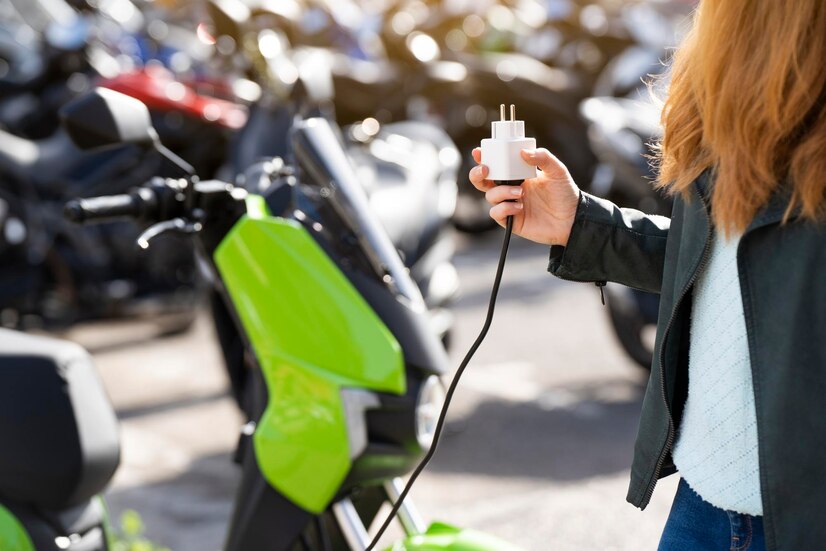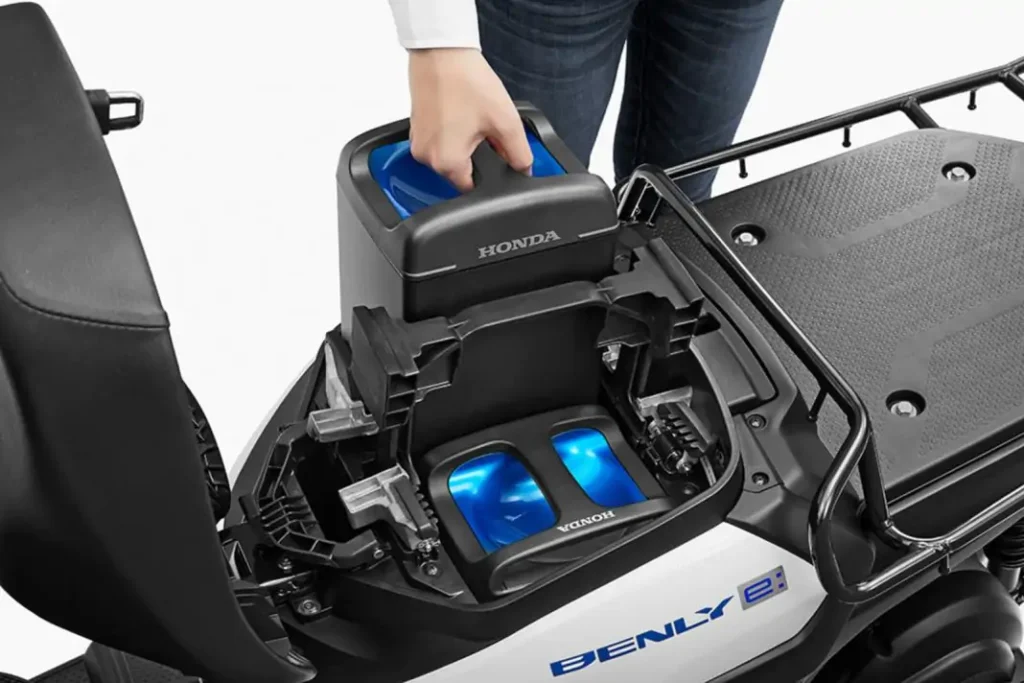Introduction
In recent years, electric scooters have witnessed a surge in popularity, primarily attributed to their remarkable convenience, affordability, and environmentally-friendly characteristics.. As more people embrace these two-wheeled wonders for their daily commutes and leisure rides, questions about their battery life and longevity have become prominent. Within this extensive guide, we shall explore the various factors that influence the lifespan of an electric scooter battery, investigate methods to extend its longevity, examine indicators of a declining battery, contemplate the process of battery replacement, assess the environmental impact of these batteries, and make a comparison of electric scooter battery life with alternative transportation options. Upon reaching the conclusion of this article, you will possess a comprehensive comprehension of the typical lifespan of an electric scooter battery and valuable insights on optimizing this eco-friendly mode of transportation.

Understanding Electric Scooter Batteries
Types of Electric Scooter Batteries
Electric scooters primarily utilize two main types of batteries: Lithium-ion (Li-ion) and Lead-acid batteries. Each type has its unique characteristics, affecting their performance and longevity.
Lithium-ion (Li-ion) Batteries: Lithium-ion (Li-ion) batteries are the favored option for contemporary electric scooters due to their widespread popularity. These batteries boast higher energy density, resulting in a lighter and more compact design. Moreover, Li-ion batteries surpass their Lead-acid counterparts with a longer lifespan, making them an attractive choice for electric scooter manufacturers. As Li-ion technology continues to advance, it also enhances safety and efficiency, solidifying their position as the preferred battery type for electric scooters.
Lead-acid Batteries: While not as common as Li-ion batteries, some electric scooters still use Lead-acid batteries due to their lower cost. However, they are heavier and bulkier, affecting the scooter’s overall weight and maneuverability. Moreover, Lead-acid batteries have a shorter lifespan and may require more frequent replacements.
Factors Affecting Battery Life
Several factors play a crucial role in determining the overall lifespan of an electric scooter battery. Understanding these factors can help users adopt practices that maximize battery life.
1. Usage Patterns: How frequently and how long the electric scooter is used can impact battery longevity. Frequent and extended rides can cause more wear and tear on the battery.
2. Terrain: The type of terrain on which the electric scooter is ridden can affect the battery. Riding on rough and uneven surfaces may cause additional stress on the battery, potentially reducing its life.
3. Temperature: Extreme temperatures, both hot and cold, can influence battery performance. Very high temperatures can lead to accelerated battery degradation, while extremely cold temperatures can reduce the battery’s efficiency temporarily.
4. Charging Habits: Proper charging practices are vital for preserving battery health. Overcharging or deep discharging the battery regularly can negatively affect its lifespan.

How Long Does an Electric Scooter Battery Typically Last?
Battery Lifespan in Terms of Charge Cycles
An electric scooter battery’s lifespan is often measured in charge cycles. A charge cycle represents a full discharge and recharge of the battery. Every time an electric scooter is used and its battery is charged from 0% to 100%, it consumes one full charge cycle. Understanding the number of charge cycles a battery can endure is crucial to estimating its lifespan.
Average Charge Cycles: Most electric scooter batteries are designed to handle approximately 300 to 500 charge cycles before their capacity starts to noticeably decline.
Battery Capacity Retention: After hundreds of charge cycles, a battery’s capacity might decrease to around 80% or 70% of its original capacity. This reduction in capacity is considered normal wear and tear for batteries.
Battery Lifespan in Years
In addition to assessing battery life in terms of charge cycles, it is crucial to take into account the battery’s lifespan in years. The duration an electric scooter battery remains functional is influenced by various factors, such as usage patterns, charging practices, and the battery type.
Average Lifespan: On average, an electric scooter battery can endure anywhere between 2 to 4 years. By providing proper care and regular maintenance, some batteries may even surpass the 4-year milestone.
Battery Type and Lifespan: Li-ion batteries generally boast a longer lifespan compared to Lead-acid batteries. Li-ion batteries can persist for approximately 2 to 4 years, while Lead-acid batteries may necessitate replacement within 1 to 2 years.
Read also: Why iPhones Are So Expensive in India?
Tips to Extend Electric Scooter Battery Life
To get the most out of your electric scooter battery and prolong its lifespan, consider adopting the following practices:
Proper Charging Practices
- Avoid Overcharging: Once the battery is fully charged, disconnect the charger immediately to prevent overcharging. Most modern electric scooters come with built-in protection to stop charging once the battery reaches its full capacity.
- Avoid Deep Discharges: While it is essential to keep the battery charged, avoid discharging it completely whenever possible. Recharging the battery before it reaches extremely low levels helps maintain its health.
- Charge Regularly: Charge your electric scooter regularly, especially if you use it frequently. Partial charges are generally better for Li-ion batteries than allowing them to fully deplete before charging.
Storing the Scooter and Battery
- Store in a Cool, Dry Place: When you are not using your electric scooter for an extended period, store it in a cool, dry place away from direct sunlight and extreme temperatures.
- Remove the Battery: If you do not plan to use the scooter for an extended period, remove the battery and store it separately in a safe and dry location.
Regular Maintenance
- Keep it Clean: Regularly clean your electric scooter and the battery to remove dirt and debris. Clean connections and terminals can ensure efficient charging and prevent potential issues.
- Secure Attachment: Ensure that the battery is securely attached to the scooter to avoid unnecessary vibrations and movement during rides.
Signs of a Declining Battery
As an electric scooter battery ages, it may exhibit certain signs of decline. Identifying these signs can help users determine when a battery replacement might be necessary.
Reduced Range
A declining battery may not hold its charge as efficiently, resulting in reduced travel range on a single charge. If you notice a significant decrease in the distance your scooter can travel, it might be time to check the battery’s health.
Slower Acceleration
As the battery ages, it may struggle to provide sufficient power, leading to slower acceleration and reduced overall performance.
Battery Voltage Drop
Monitoring the battery’s voltage during usage can provide insights into its health. A significant voltage drop during rides may indicate a deteriorating battery that requires attention.
Replacing an Electric Scooter Battery
While electric scooter batteries are designed to last for several years, there may come a time when a replacement is necessary. Understanding the battery replacement process and options is essential for electric scooter owners.
DIY vs. Professional Replacement
Replacing an electric scooter battery should be approached with caution. While some experienced users might attempt DIY battery replacements, seeking professional assistance is recommended. Professionals have the expertise to ensure safe and proper installation, reducing the risk of damage to the scooter or injury to the user.
Recycling Old Batteries
Proper disposal and recycling of old electric scooter batteries are crucial for minimizing their environmental impact. Many local recycling facilities or electronics stores accept used batteries for recycling.

Environmental Impact of Electric Scooter Batteries
Electric scooters are hailed for their eco-friendly nature, as they produce fewer emissions than gasoline-powered vehicles. However, it is essential to consider the environmental impact of their batteries.
E-waste Management
As electric scooters gain popularity, proper e-waste management becomes increasingly critical. Recycling and disposing of used batteries responsibly can prevent harmful materials from ending up in landfills.
Eco-Friendly Battery Technologies
Researchers and manufacturers are continuously exploring eco-friendly battery technologies to minimize the environmental impact of electric scooters. Advancements in battery chemistry and recycling methods aim to create more sustainable energy storage solutions.
Comparing Electric Scooter Battery Life with Other Transportation Options
Understanding how electric scooter battery life compares to other transportation options provides valuable insights into the overall sustainability of electric scooters.
Electric Scooters vs. Gasoline-Powered Vehicles
Electric scooters stand out as an environmentally friendly alternative to traditional gasoline-powered vehicles with internal combustion engines. Electric scooters produce zero tailpipe emissions and contribute to cleaner air in urban areas.
Electric Scooters vs. Electric Bicycles
Electric scooters and electric bicycles (e-bikes) are both popular choices for short-distance commuting. While e-bikes also have eco-friendly attributes, electric scooters provide distinct advantages in terms of convenience and ease of use.
Conclusion
Electric scooters have sparked a revolutionary transformation in urban transportation, offering a sustainable and efficient alternative to traditional modes of travel. For riders to fully embrace this eco-friendly mode of transportation, understanding the typical lifespan of an electric scooter battery and optimizing its longevity is vital.
By implementing proper charging practices and ensuring correct storage of the scooter and battery, electric scooter owners can significantly extend the life of their batteries. Moreover, being attentive to signs of a declining battery allows for timely maintenance and contributes to a cleaner and greener environment. Embracing these practices empowers riders to make the most of their electric scooters while minimizing their environmental impact.
FAQs
- How often should I charge my electric scooter?
- It is recommended to charge your electric scooter after each use, especially if it was used extensively. Regular charging helps maintain battery health and ensures the scooter is ready for your next ride.
- Can I overcharge my electric scooter battery?
- Modern electric scooters usually have built-in protection to prevent overcharging. However, it is still advisable to disconnect the charger once the battery is fully charged to avoid any potential issues.
- Are there any safety precautions when using an electric scooter?
- Yes, safety is crucial when using an electric scooter. Always wear appropriate safety gear, including a helmet, knee pads, and elbow pads. Follow traffic rules, avoid riding on busy roads or in hazardous conditions, and be aware of pedestrians and other vehicles around you.
- Can extreme weather conditions affect the battery life?
- Yes, extreme temperatures can impact battery performance and reduce its lifespan. Avoid exposing the scooter to direct sunlight for prolonged periods on hot days, and keep the battery away from extreme cold temperatures. Store the scooter indoors when not in use during extreme weather conditions.
- Is it possible to upgrade the battery capacity of an electric scooter?
- In some cases, it might be possible to upgrade the battery capacity of an electric scooter. However, it is essential to consult the manufacturer or a professional before attempting any modifications. Upgrading the battery may affect the scooter’s performance, safety, and warranty, so it should be done carefully and with expert guidance.